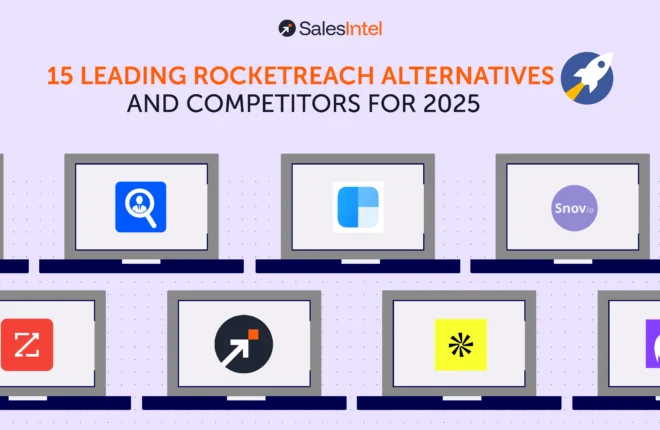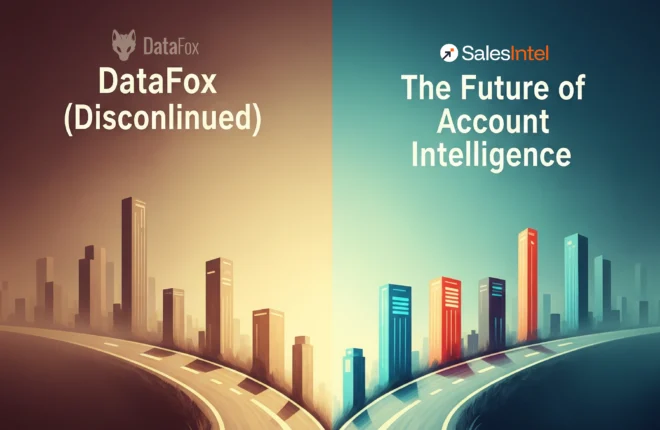The B2B buyer experience is more complex and time-consuming than that of B2C. B2B buyers may spend months assessing an issue, researching solutions, and evaluating possible service providers before deciding on a vendor that fits their needs.
However, sales and marketing teams play a pivotal role in guiding customers through the sales funnel by addressing the unique demands and obstacles t customers encounter at each stage of the B2B buyer journey.
This article discusses how your team can assist potential clients at each buyer journey stage.
Difference Between B2B and B2C Buyers Journey
Before we jump into the stages, let’s discuss the difference between the B2B buyer’s journey and the B2C buyer’s journey.
1. Catering to Teams, Not Individuals
In B2B sales, a pivotal distinction is that your customers often encompass more than individual buyers. Instead, B2B transactions often involve entire teams or groups, each member potentially influencing the purchase decision-making process.
Research by Gartner shows that the typical B2B buying process involves six to ten decision-makers. This often results in a more intricate and extended buying process.
This sharply contrasts with the B2C buyer’s journey, where individual consumers are the sole decision-makers, leading to faster decision-making.
2. Dealing with Larger-scale Transactions
B2B transactions typically involve larger deal sizes, encompassing both the size of each deal/order and the total revenue per customer.
While these deals may take longer to materialize, they often yield significantly higher returns per sale.
This also allows B2B enterprises to be more selective and invest more resources in acquiring each lead, ensuring they align well with the company’s objectives.
3. Lengthy Sales Cycles
Unlike B2C purchases, which often involve smaller transactions with fewer decision makers, B2B transactions typically entail longer and more complex sales cycles.
Closing substantial deals with large decision-making teams results in protracted sales cycles. The average B2B buying cycle is considerably longer than that of B2C transactions.
Consequently, B2B marketing and sales strategies must be carefully divided into measurable, manageable, and quantifiable segments that span several months.
Providing upfront education and value propositions is key to facilitating a logical progression of micro-conversions that guide decision-makers seamlessly through each stage of their buying journey.
4. Emotional Factors in B2B Decision-Making
While B2B decision-making may initially seem logic-driven compared to the emotionally motivated nature of B2C transactions, the reality is more nuanced.
Research by Google, Gartner, and Motista indicates that, on average, B2B customers exhibit significantly stronger emotional connections to their vendors and service providers than their B2C counterparts.
However, the ultimate decision often hinges on which provider is the best ‘fit’ rather than solely on price considerations, indicating an emotional component in the B2B buyer’s decision-making process.
Understanding the B2B Buyer’s Journey: A Crucial Roadmap for Sales and Marketing Teams
Phase 1: Awareness
At the beginning of the buying process, potential consumers are aware of the problem but unsure of possible remedies. At a high level, they are likely to gather information to better understand their problems and learn how to solve them.
The most common reason why companies start looking for a B2B service provider is to increase efficiency, followed by the need for additional support when launching a new system or product or scaling a business.
Addressing these issues can help potential customers decide to hire a supplier. Providing educational content can also increase brand awareness and engage potential buyers.
Tips for Engaging Buyers in the Awareness Stage
- Understand your ideal customer persona (ICP). Your ICP represents your best-fit customers. This could mean companies in specific industries, sizes, and stages of growth, as well as particular buyers within an organization who drive decision-making. When you have a clear idea of who your best-fit customers are, you can better understand what motivates them and how you can attract them more effectively.
- Develop high-quality content that answers your prospects’ big questions. Top-of-funnel content like blogs, videos, and social media posts can answer your ICP’s most significant questions and give them enough information to determine what support they need. Getting your brand in front of a large audience can set the stage for new interactions and conversions.
- When you connect with a prospect, spend time doing research. Before you start presenting features, go back and ask questions to understand what issues or pain points caused them to reach out. This allows your sales team to discuss your company’s solutions and how you can address each customer’s specific needs.
Phase 2: Research and Evaluation
Once a potential buyer has made the decision to onboard a new solution or vendor, they begin to research what services they need and who can provide them.
As they continue the research process, they evaluate potential partners, even if they are not ready to contact service providers.
This is why engaging potential customers early in the research process is critical. One of the best ways for you to reach more consumers and guide them to convert is to develop your online presence with a website, social media, community building, and paid ads.
Tips for Reaching Buyers in the Research and Evaluation
- Increase your online presence with online reviews. Online reviews are crucial in building trust and credibility with potential customers. Positive reviews act as social proof and show that others have had a positive experience with your company’s products or services.
- Make your business stand out by building your unique expertise compared to other service providers in your class. For example, highlight your most popular services or industries. Suppose you run a software development company. You could differentiate your business by emphasizing your expertise in providing customized CRM (Customer Relationship Management) solutions for financial institutions. This will give you more qualified leads.
- Keep updating your online profiles. Buyers want to see a consistent growth pattern of your company. This can be done by constantly updating your online profiles, success stories, testimonials, etc., to demonstrate that your team consistently provides quality services.
Phase 3: Shortlisting
During this phase, B2B buyers begin narrowing down their list of potential partners and reaching out to preferred vendors. While they have conducted initial research, they still have specific questions about services, pricing, and more.
You can engage buyers in this stage by addressing their questions directly, emphasizing their unique value proposition, and fostering relationships with potential clients.
Tips to Engage Buyers in the Shortlisting Stage
- Showcase relevant industry examples: Utilize reviews and case studies from past clients that are similar (or facing similar challenges) to your prospects. Highlight the outcomes your team has achieved and how you addressed specific pain points that may apply to them.
- Respond promptly: The typical turnaround time is approximately 12 hours for the companies that do respond. However, there have been instances where the slowest response has taken more than eight days to arrive. If a future call is scheduled, confirm receipt of the request via email or text and use this opportunity to gather preliminary information to better prepare for the upcoming sales call.
- Justify pricing: Instead of focusing solely on offering the lowest price, emphasize the value your services provide within the buyer’s budget. Clearly articulate why your offerings are worth the investment and highlight the potential risks of choosing a different option.
Phase 4: Decision Making
Buyers narrow their options and evaluate more than just each vendor’s expertise.
While a provider’s understanding of specific business needs and ability to deliver are crucial considerations, buyers also weigh factors such as the ease of business and communication with potential partners, customer service, and more.
In this phase, it’s imperative to illustrate your product’s or service’s value and advantages, address any reservations or objections, and ensure a seamless, trustworthy experience throughout the entire sales journey.
Tips to Engage Buyers in the Decision-Making Stage
- Create urgency: Encourage prospects to act by reminding them of the pain points they aim to resolve. Discussing the opportunity cost of delaying the project’s start can motivate them, followed by outlining your proposed timeline for achieving impact.
- Navigate negotiations with context: B2B buyers often negotiate by raising objections to certain contract terms. Understanding the rationale behind their objections allows you to address their concerns effectively, fostering alignment between both parties and increasing your chances of closing the deal.
- Empower and reassure clients: Acknowledge that the B2B buyer journey can be daunting. By actively addressing their concerns and providing thorough answers to their inquiries throughout the process, you instill confidence in their decision-making while showcasing the value you bring to the table.
Phase 5: Post-Decision
The buyer’s journey doesn’t end once you secure the contract. As the relationship unfolds, buyers continuously assess the provider’s performance and monitor their delivery.
To keep your customers happy, you must ensure a seamless transition to account managers, maintain open communication channels, and fulfill all promises made during the sales process.
Tips to Engage Buyers in the Post-Decision Stage
- Seek feedback: Online reviews are invaluable for educating potential customers, bolstering credibility, and attracting new clients. After a period of collaboration, encourage your happy customers to share their experiences and leave a review.
- Maintain communication: Regularly check in with your clients on recent progress and noteworthy results. Keeping your customers informed fosters trust and confidence in the value your team delivers.
- Explore upselling opportunities: Periodically present additional services to clients as your partnership evolves. Satisfied clients are often receptive to enhancing performance and expanding their business, presenting opportunities for you to grow a mutually-beneficial relationship.
Role of Buyer Intent Data at Each Stage
Buyer intent data provides valuable insights into potential customers’ interests, preferences, and behaviors throughout the B2B buyer’s journey. Here’s how it can help at each stage:
1. Awareness Stage:
- Identify Potential Leads: Intent data helps identify businesses showing early interest in topics related to your products or services, allowing you to target them with relevant content and ads.
- Tailor Content: By understanding the topics and keywords potential buyers are researching, you can create content that addresses their initial questions and challenges, positioning your brand as a helpful resource.
2. Consideration Stage:
- Segment Audience: Intent data allows you to segment leads based on their level of interest and engagement, enabling you to tailor messaging and content to their specific needs and preferences.
- Prioritize Leads: Identify leads showing the strongest intent signals, such as frequent visits to your website or engagement with specific content, and prioritize them for personalized outreach or follow-up.
3. Decision Stage:
- Customize Offerings: Intent data provides insights into the specific features or solutions potential buyers are actively researching, allowing you to tailor your offerings and messaging to address their concerns and requirements.
- Timing: By monitoring intent signals, such as repeated visits to pricing pages or comparison content, you can identify when leads are close to making a decision and engage them with targeted offers or incentives.
4. Post-Purchase Stage:
- Cross-Selling and Upselling: Intent data can help identify opportunities to cross-sell or upsell additional products or services based on the buyer’s ongoing interests and needs.
- Customer Retention: Continuously monitoring intent signals post-purchase allows you to anticipate potential churn or identify opportunities to support further and engage customers, fostering long-term relationships and loyalty.
Buyer intent data enables businesses to understand better and engage potential customers at each stage of the B2B buyer’s journey, leading to more targeted marketing efforts, increased sales effectiveness, and improved customer satisfaction and retention.
Maximizing B2B Sales Potential Across Every Stage
Understanding your potential buyers’ needs and behaviors at each stage of their journey is crucial for your success. Throughout this journey, you can improve your strategies by using insights into prospects’ interests, preferences, and intentions.
From the early stages of awareness to the final decision-making phase and beyond, tailoring your approaches, focusing on promising leads, and providing timely and relevant content and offers are essential.
Your B2B organization can refine its marketing and sales strategies using these insights. You can interact better with prospects and customers and successfully acquire, retain, and expand your client base.
As technology evolves and data analytics capabilities advance, integrating buyer intent data into B2B operations will become increasingly indispensable for businesses looking to stay ahead in the competitive environment.





